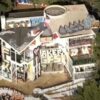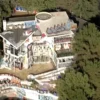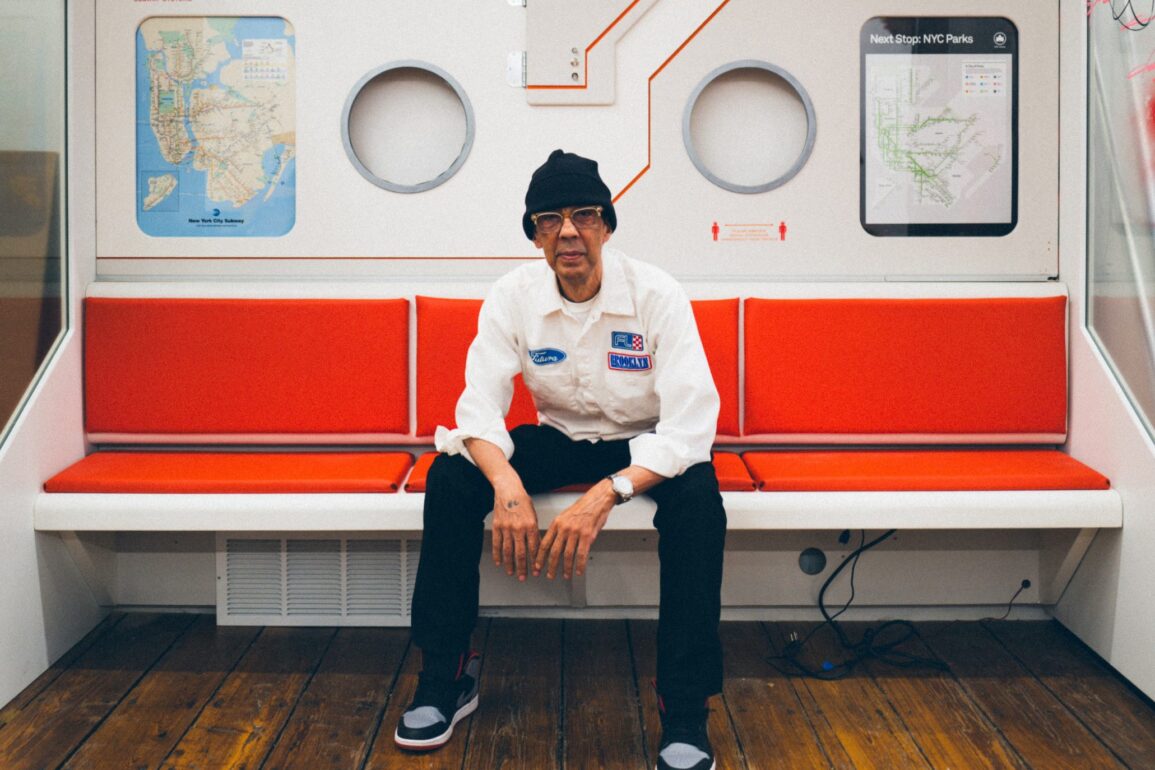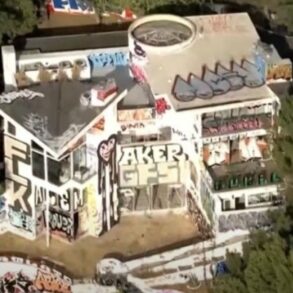Leonard Hilton McGurr was a New York City kid, growing up on West 103rd Street and Broadway, when he first picked up a can of spray paint in the early 1970s. He adopted the moniker Futura 2000, and 50 years later, the graffiti writer-turned fine artist has his first museum show in his home city, courtesy of the Bronx Museum.
“It feels like a return,” Futura told me, reminiscing about his youth painting subway cars in the Bronx.
The subway features heavily in the show, with part of the museum made up with replica MTA signs and ticket booth, as if you were about to board the train. It is hearkening back to the early years of the artist’s career, when he would tag cars and then sit on “the bench,” as fellow graffiti artists called it, to watch their handiwork go by on the Bronx’s elevated lines.
“Part of the mystique of graffiti at that time was the citywide exploration and the discovery of all these neighborhoods and areas of the city where the subway lines start and end,” Futura said.
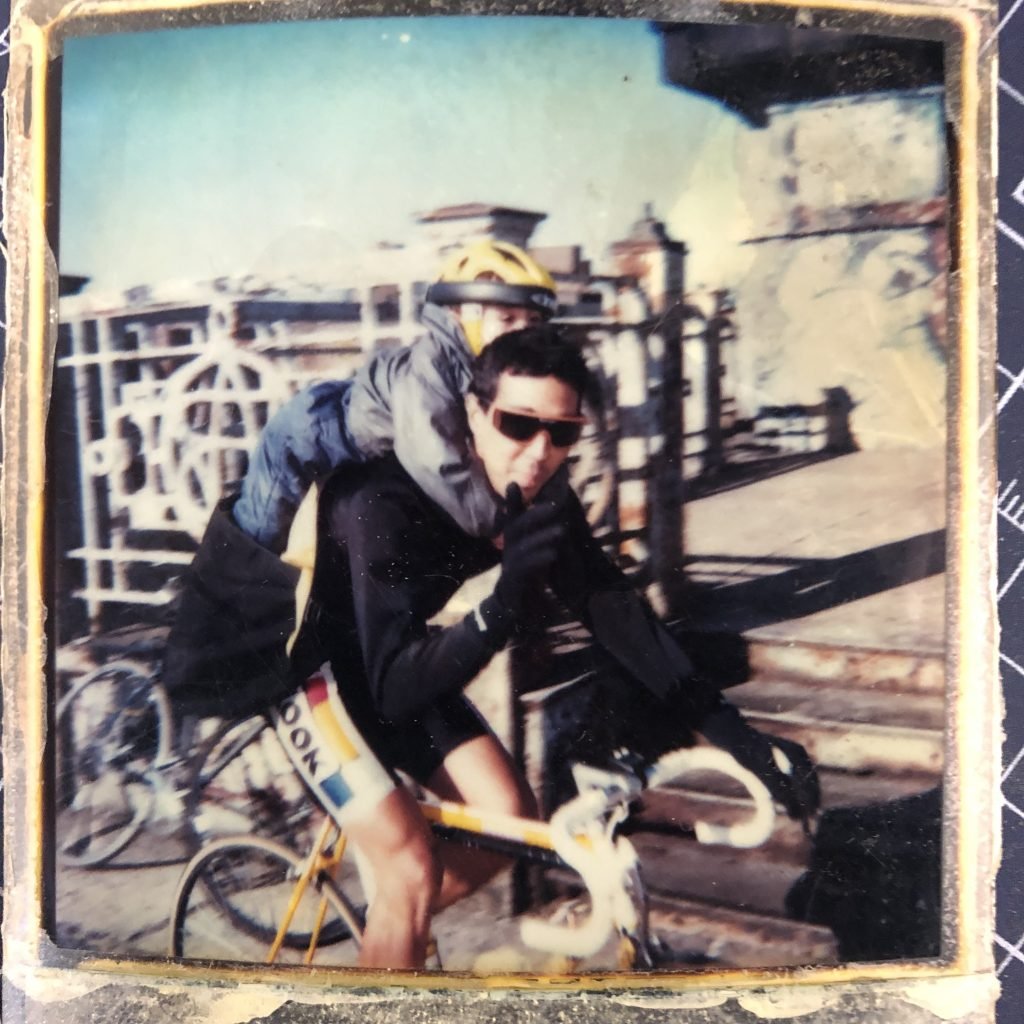
Photo of Futura 2000 and his son, 1980s. Photo courtesy of the Bronx Museum.
The train yards in the Bronx (and other boroughs) became hot spots for graffiti writers like Futura as the burgeoning movement grew from kids armed with just magic markers or a can or two of spray paint to full-fledged artists creating increasingly elaborate designs that would cover the full subway car.
“At 15, I was not considering myself an artist,” Futura admitted. “I was simply making my mark.”
Developing a real artistic style—one that’s been likened to Wassily Kandinski, an artist Futura had never head of as a young man—didn’t come until years later.
In 1973, Futura and a friend got caught in a fire in a subway tunnel. The friend was badly injured, and the incident prompted Futura to enlist in the military. But when his service was done in ’78, it wasn’t long before the graffiti world came calling.
“I met up with some of my old graffiti friends, and they were like, ‘you won’t believe what’s going on underground right now,’” Futura recalled.
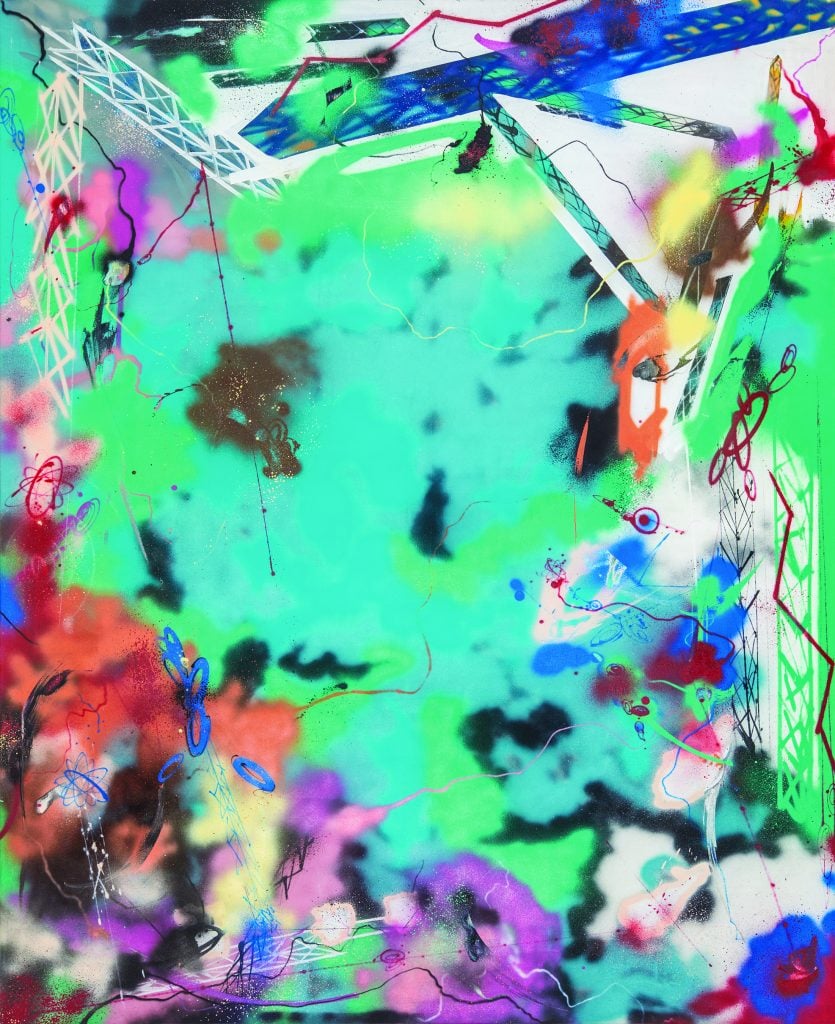
Futura 2000, Colorforms (1991). Collection of Patrick Lerouge.
He was blown away by the work being done by artists like Phase 2 and Zephyr, and was inspired to try his hand at painting an entire subway car himself—”kind of the ultimate prize for us at that time.”
The result was The Break Train, which remains one of Futura’s most famous works. Instead of sticking to the standard graffiti lettering highlighting the artist’s name, Futura spent about four hours transforming the train into an abstract canvas, a hazy field of reds, pinks, and orange, with a burst of white in the center.
The artistic breakthrough—more impressionistic and more abstract than anything the graffiti world had ever seen, and remarkably beautiful— was immortalized by the famed graffiti photographer Martha Cooper. Her image, shot (naturally) in the Bronx, is one of the exhibition’s highlights.
If the The Break Train and his other early graffiti work had made him a legend, collaborations with brands like Nike, Supreme, and even Louis Vuitton have made him a sought after figure in the hypebeast crowd.
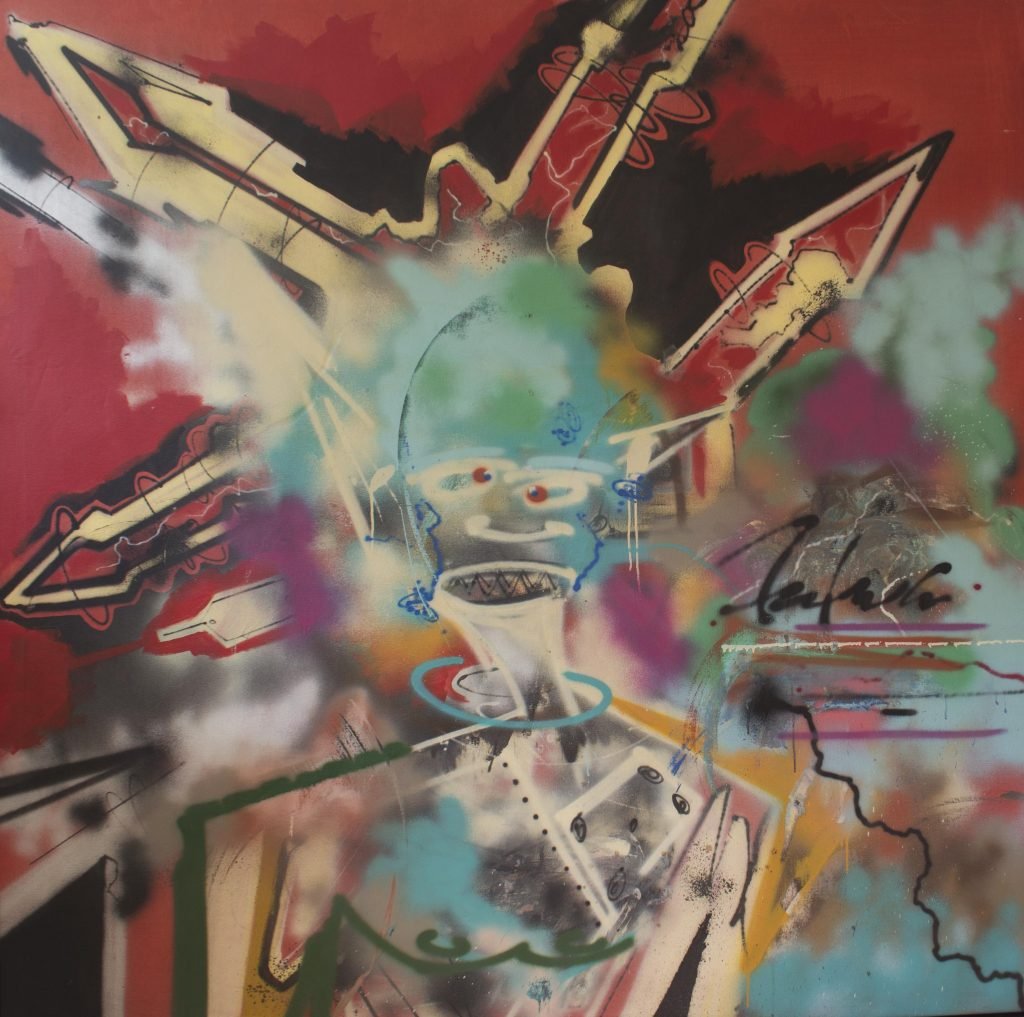
Futura 2000, El Diablo, (1985). Collection of KAWS.
So it is fitting that the show has several pairs of covered Nike sneakers—including a pair made for the 2024 Paris Olympics, for which the artist also designed the official uniforms for the U.S., Japanese, and South Korean breaking teams.
Futura has also created a new site-specific mural at the entrance to the museum galleries, an almost floral looking explosion of reds, blues, blacks, oranges, and pinks that reflects his virtuosity in aerosol paint.
“The release he gets with these abstractions, plus the precision of his lines—it’s amazing how he transforms the material,” Eileen Jeng Lynch, the Bronx Museum’s director of curatorial programs, told me during a tour of the exhibition. “He was being very experimental and through being innovative and evolving he was able to produce an aesthetic and call it his own. [Futura has] his own unique visual language.”
The show debuted last year at the UB Art Galleries at the University of Buffalo, and was curated by director Robert Scalise with Zack Boehler, the public art project coordinator at the Buffalo AKG Art Museum.
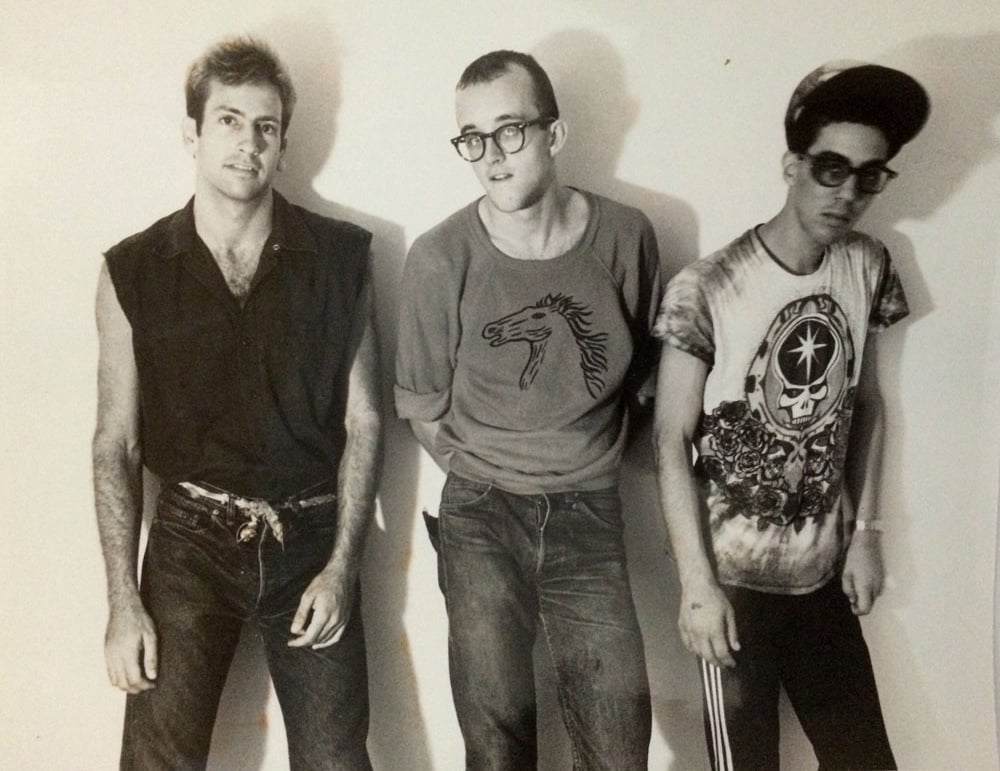
Kenny Scharf, Keith Haring, and Futura 2000. Photo: Gregg-Smith.
It tells a fascinating story of unlikely artistic success, as Futura went from early graffiti writing, to showing with Jean-Michel Basquiat, Keith Haring, and Kenny Scharf at Patti Astor’s Fun Gallery, before (temporarily) quitting the game to focus on raising his kids.
For years, Futura made his living as a bike messenger—his license for “Elite Couriers” is on display alongside photos of him at work and a worn messenger bag. But every time Futura stepped away from his art, something seemed to draw him back in.
In the early 2000s, Futura credits the rise of street artists such as Banksy and Shepard Fairey with rekindling interest in earlier practitioners of the medium.
Most recently, it was Eric Firestone Gallery that began working with Futura to reintroduce him to the art world proper in 2020. What the gallery recognized was that beyond his reputation for graffiti world, Futura was an artist with a decades’ long studio practice.
The Bronx Museum has resurfaced some of Futura’s earliest works on canvas, including a painting he made at the studio of hip hop pioneer Fab Five Freddy.

Futura 2000, Garbage Rock (1983). Collection of Patrick Lerouge.
Other early ephemera include a Futura painting on a refrigerator door and a “black book” of sketches and signatures from other artists who visited his studio back in 1980, each signing each other’s notebooks. Lost for decades, it is on loan to the museum courtesy of courtesy of collector Beth Rudin DeWoody.
“One day the book just went missing. I was gutted in the moment,” Futura admitted. “I forgot about that book and when it came back to me as a boomerang, I simply couldn’t believe it because I thought it was actually serendipitous.… it’s just wonderful to have that relic… returned home, in a sense, for this exhibition.”
“Futura 2000: Breaking Out” is on view at the Bronx Museum, 1040 Grand Concourse, Bronx, New York, September 8, 2024–March 30, 2025.
This post was originally published on this site be sure to check out more of their content.

